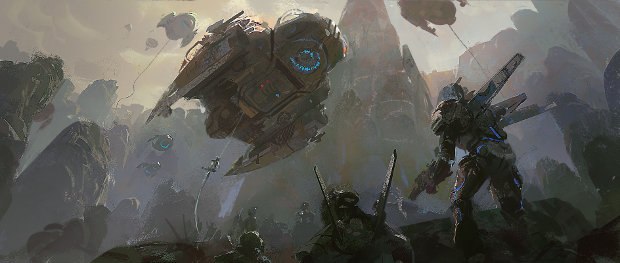Jennifer Lee and Maggie Malone take an in-depth look at the visual development stages of Disney’s latest animated feature.
San Francisco, Chronicle Books, November 2012, hardcover $40.00 (160 pages).
This coffee-table art book presents, as it says, the art of the November 2 Disney animated feature, Wreck-It Ralph. The authors are Jennifer Lee, a script writer on Wreck-It Ralph, and Maggie Malone, the director of development at Walt Disney Animation Studios who has worked on Disney’s Tangled, Tinker Bell, and The Princess and the Frog. The Preface is by John Lasseter, chief creative officer at Walt Disney and Pixar Animation Studios, and principal creative officer at Walt Disney Imagineering and the Academy Award-winning director of Pixar’s Tin Toy and a Special Achievement Oscar for Toy Story. The Foreword is by Rich Moore, Wreck-It Ralph’s director.
As other reviewers have noted, Wreck-It Ralph does for arcade video-game animation what Who Framed Roger Rabbit? did for the classic animation characters. Yet there is little in this art book on the other video-game characters licensed for guest appearances in Wreck-It Ralph. The art presented is heavy on concept art, preliminary character design, and rough sketches of the main characters and settings, showing how Disney’s artists progressed from their beginnings to their final art design.
Wreck-It Ralph “explore[s] the hidden world of video games from classic 8-bit arcade games to the most modern and inventive offerings of the digital age.” (press release) Ralph, the hulking bad-guy of the fictional 1980s 8-bit arcade game Fix-It Felix, grows tired of being cast as an unappreciated villain. He escapes to the Grand Central Terminal-inspired Game Central, where he first tries out for the futuristic military action game Hero’s Duty (“When did video games become so scary!?”, Ralph moans), then for the more peaceful (he hopes) children’s candy-centered Sugar Rush. In the latter Ralph meets his partner-to-be, the tomboyish (but ultra-cute) Vanellope Von Schweetz, and the Ed Wynn-inspired villain, King Candy. Meanwhile, Felix and the other residents of the Niceland Apartments in Fix-It Felix realize that they are nothing without their loveable villain, and they set out to lure Ralph back.
Did you know that the character designers briefly considered Ralph and Vanellope as non-human characters; Ralph as a yeti, Sasquatch, or some other kind of monster, and Vanellope with green skin? Ultimately it was decided that they had to look human to fit in with their surrounding cast. Producer Clark Spencer and Art Director Mike Gabriel explain the rationale behind the decisions made, while providing many examples in usually full-color digital art, with some black-&-white graphite or brush pen sketches or storyboards. As usual with animation art books, each sketch or digital painting is identified to its artist: Bill Schwab, Jin Kim, Mike Gabriel, Daniel Arriaga, Wayne Unten, Cory Loftis, Kevin Nelson, Ryan Lang, James Finch. Doug Walker, Jeff Turley, Minkyu Lee, Victoria Ying, Lorelay Bove, Shiyoon Kim, Scott Watanabe, Brittney Lee, and many more.
The Art of Wreck-It Ralph does not tell how the movie was made as much as it thoroughly documents all the major characters and settings, and most of the original minor ones. There is even a brief section on important supporting characters developed but omitted from the movie: General Lockload in the Hero’s Duty segment; Skittles, a fire-breathing unicorn with a candy-corn horn in the Sugar Rush segment; and an entire another game world, Extreme EZ Livin’ 2, that was deemed superfluous. If you like the movie – and that is almost guaranteed – you will have to have this book.
--
Fred Patten has been a fan of animation since the first theatrical rerelease of Pinocchio (1945). He co-founded the first American fan club for Japanese anime in 1977, and was awarded the Comic-Con International's Inkpot Award in 1980 for introducing anime to American fandom. He began writing about anime for Animation WorldMagazine sinceits #5, August 1996. A major stroke in 2005 sidelined him for severalyears, but now he is back. He can be reached at fredpatten@earthlink.net.











